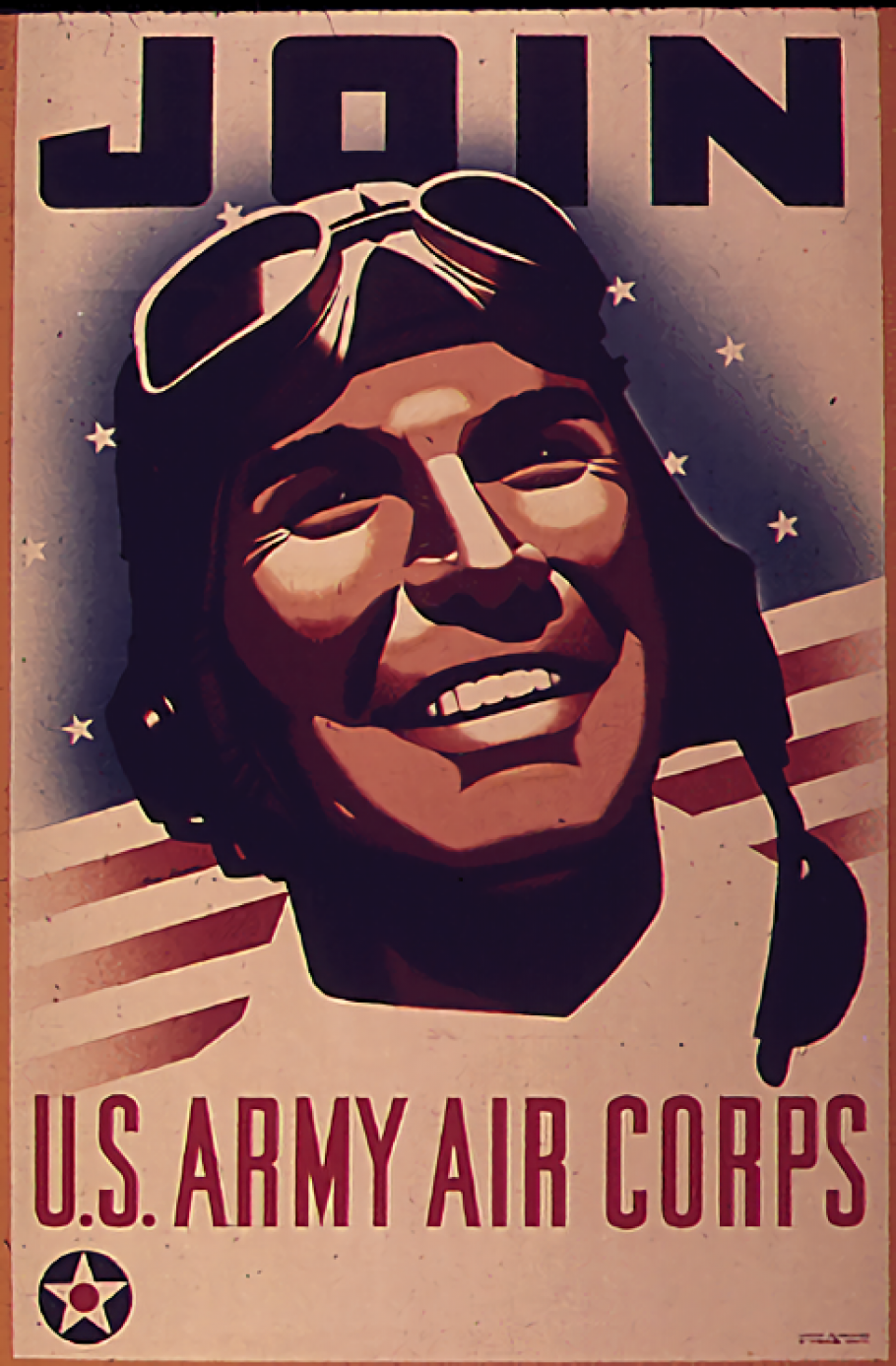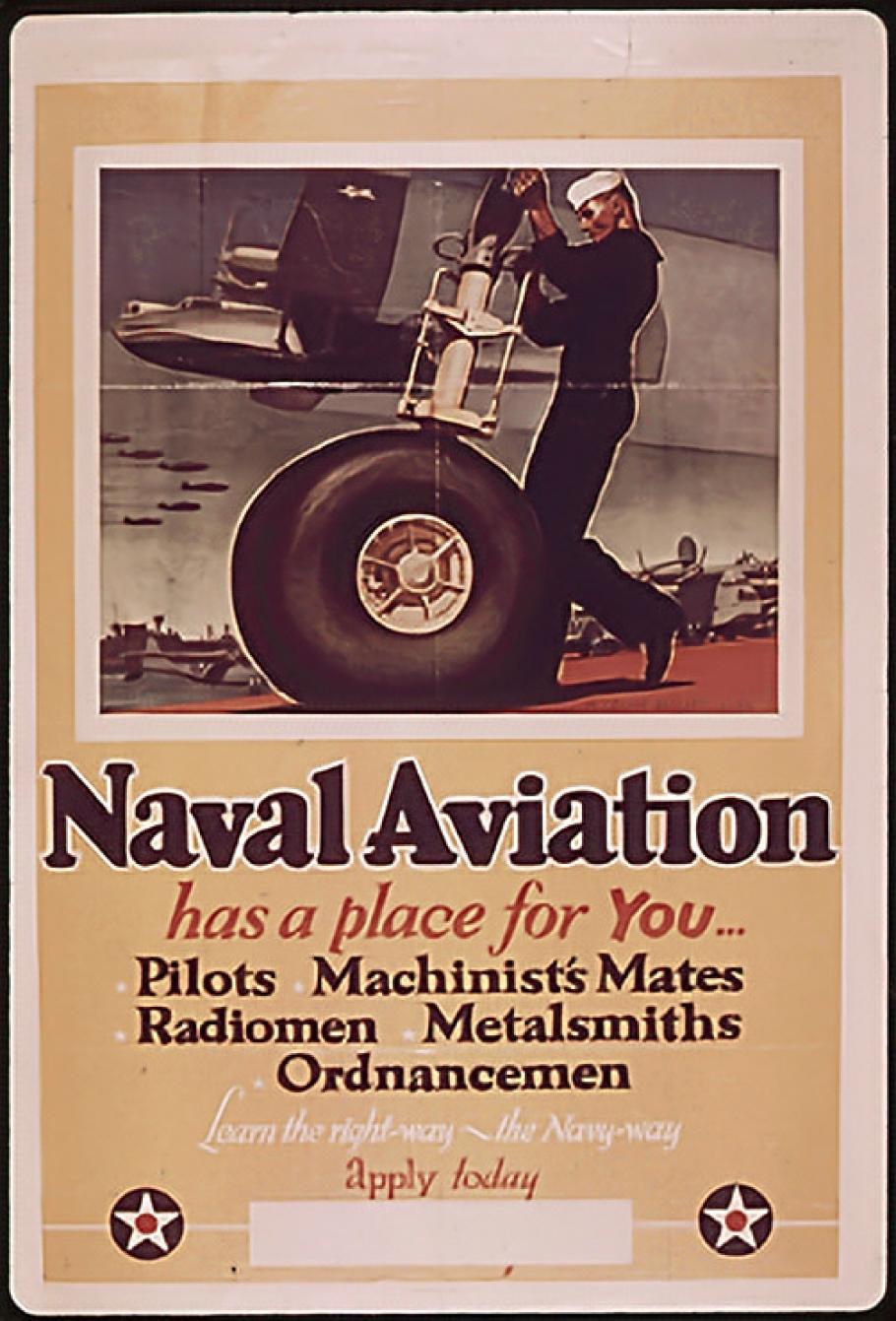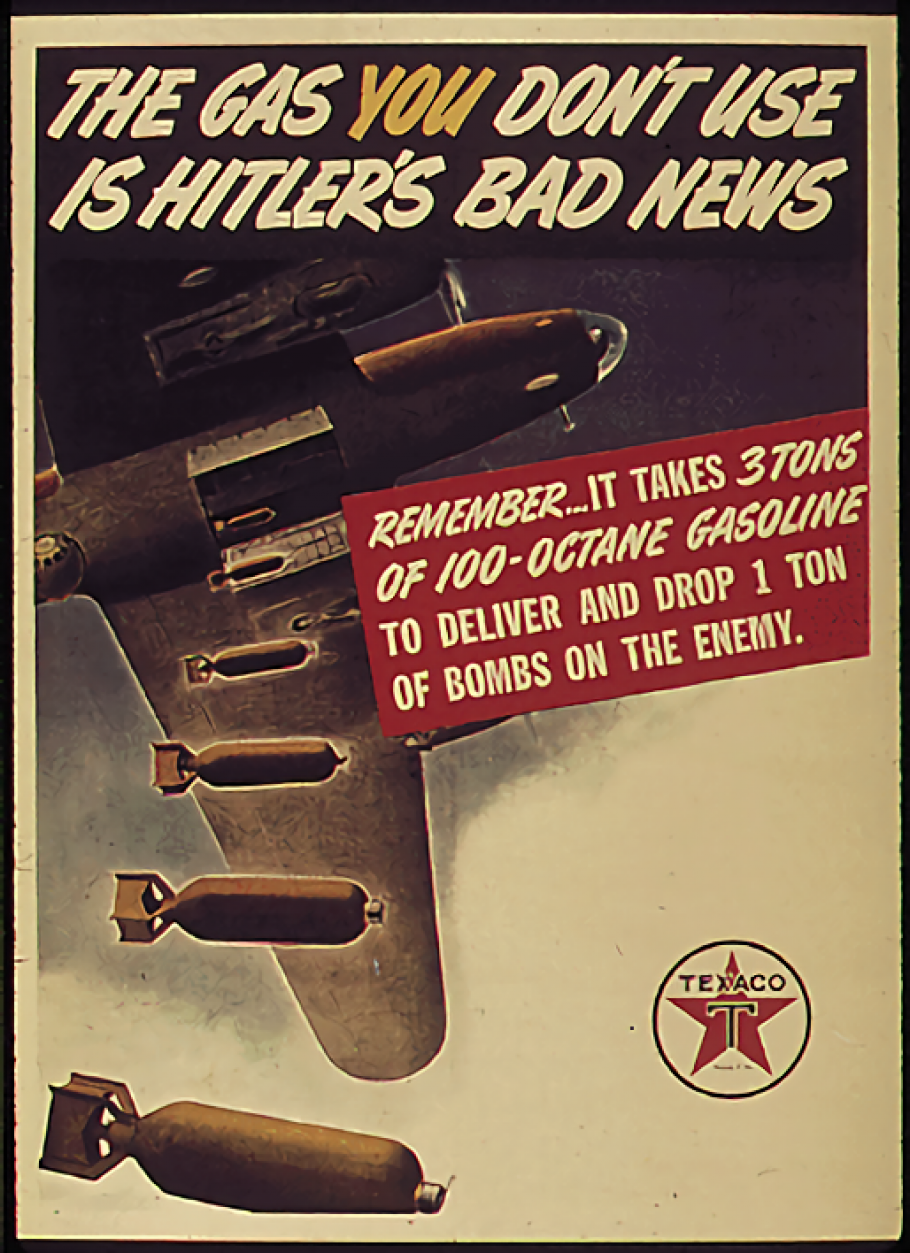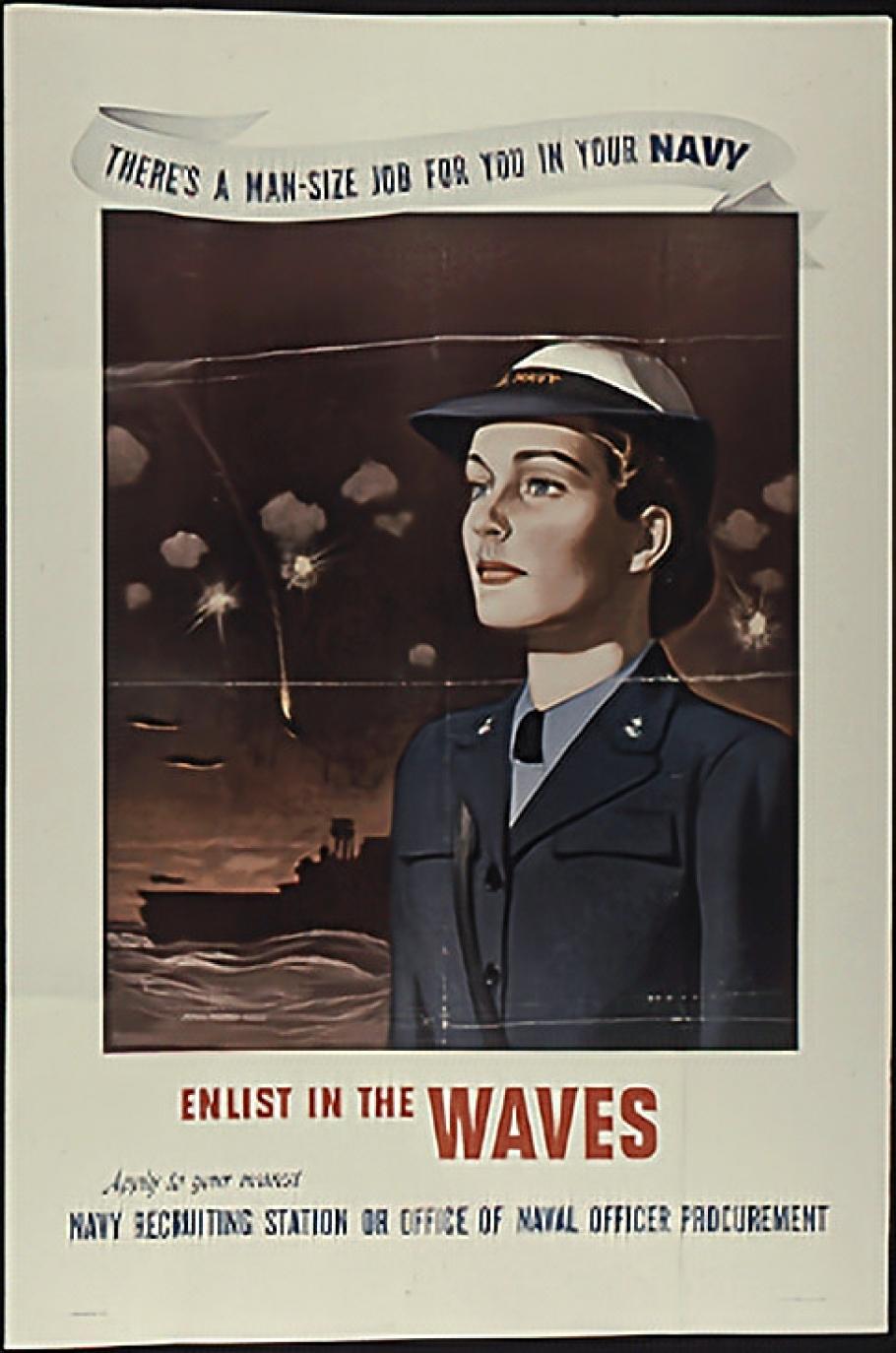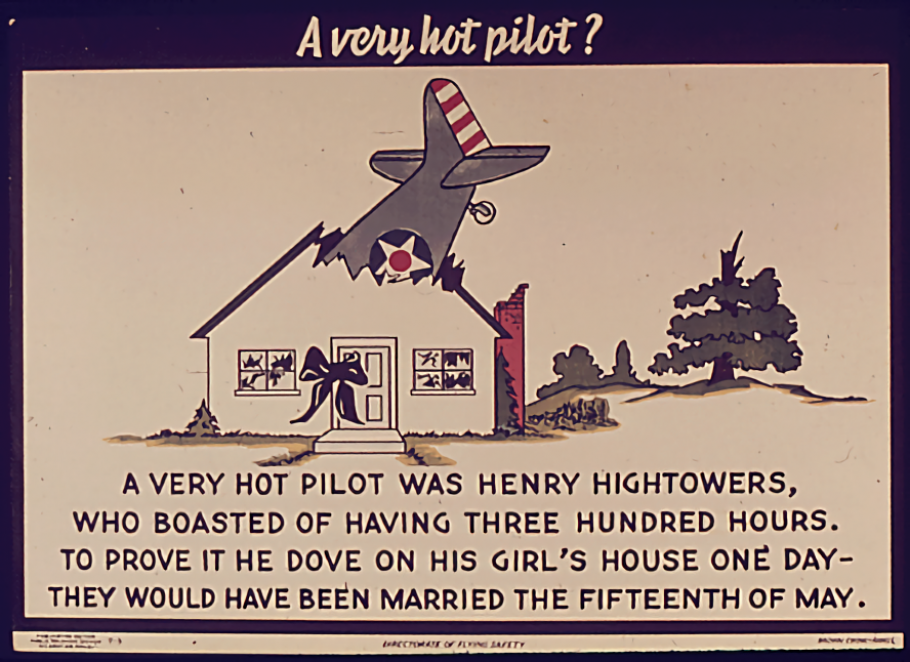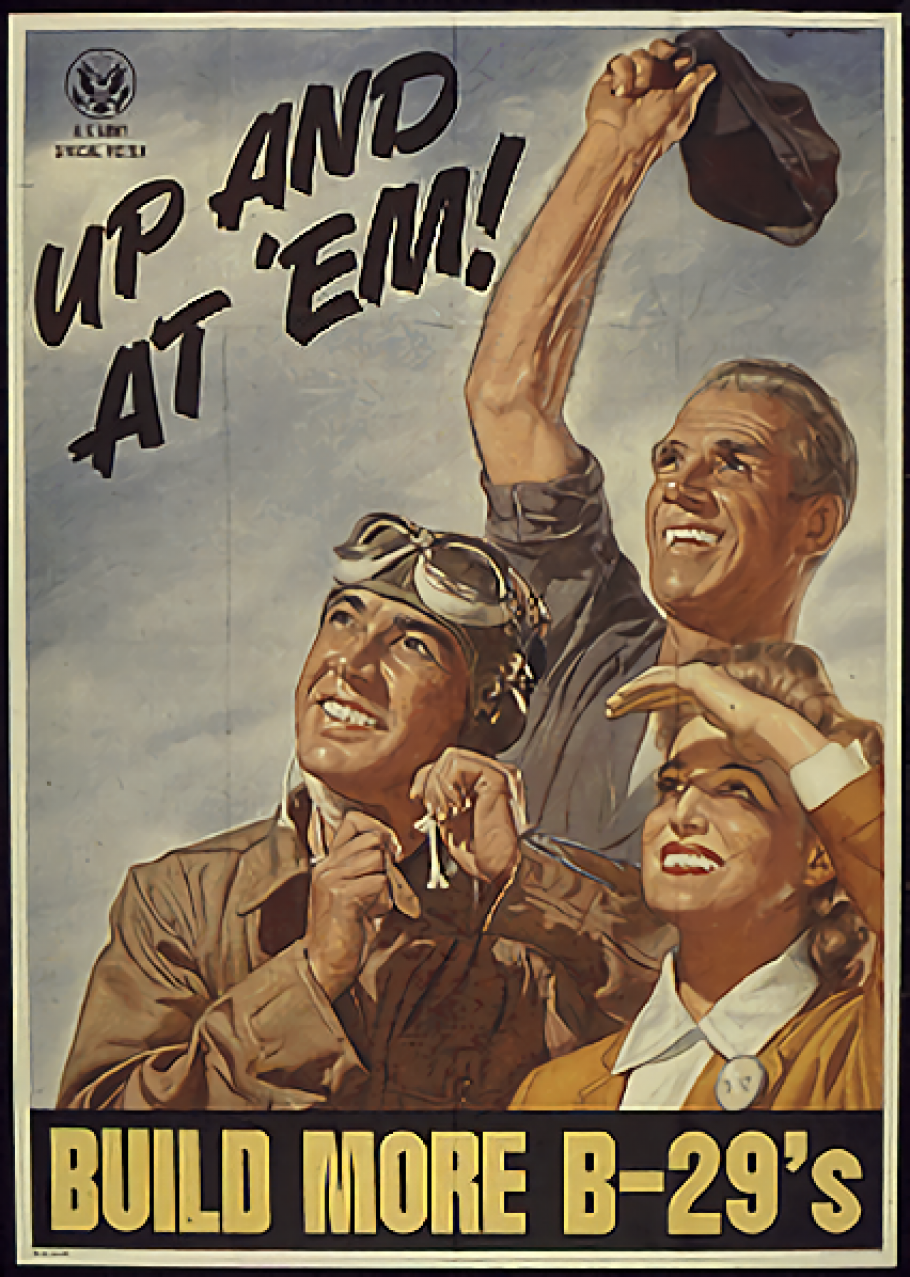Today we see advertising on little screens in the palms of our hands. But back in World War II, before television, the government delivered succinct messages about the war effort using a splashier medium: large, colorful posters.
The U.S. government used aviation-related themes to build public support for World War II. (National Archives and Records Administration, 44-PA-1152)
The posters covered many topics relevant to both the home front and the war theater, including aviation. The government used aviation-related themes to build public support for the war and remind pilots, mechanics, and other aviation workers to follow best practices for safety, resource preservation, and efficiency. The posters conveyed messages simply and directly and sometimes humorously, and some also portrayed the enemy in ethnically stereotypical and racist ways, especially when referring to Japan. I reviewed hundreds of these posters at the National Archives and Records Administration in College Park, Maryland, in the spring of 2019 as an intern with the National Air and Space Museum’s Aeronautics Department, for the upcoming Jay I. Kislak World War II in the Air gallery.
Posters from World War II often conveyed messages simply and directly. (National Archives and Records Administration, 44-PA-2480)
An online National Archives exhibit about the posters identifies several themes that also show up in the aviation posters, such as masculine strength, the need for women’s participation, freedom, conservation, sacrifice, and vigilance against enemy threat. A poster providing a stunning example of masculine strength is titled “To Victory.” Behind a B-17 Flying Fortress airplane, the head of a male pilot with chiseled facial features, wearing an aviator’s helmet and goggles, looms like a god in the sky. A similar poster with an idealized pilot’s face urged men to “Join U.S. Army Air Corps,” while one promised U.S. Navy aviation jobs for pilots, machinist’s mates, radiomen, metalsmiths, and ordnancemen.
Visual examples of masculinity were common in posers from World War II, as the head of a male pilot with chiseled facial features displayed here. (National Archives and Records Administration, 44-PA-2606)
Naval Aviation poster that advertises U.S. Navy aviation jobs for pilots, machinist’s mates, radiomen, metalsmiths, and ordnancemen. (National Archives and Records Administration, 44-PA-26)
Other posters touched on sacrifice, reminding viewers that “His Firepower Depends on Our Work Power” and that buying war bonds would “Keep Him Flying.” A poster using the catchy phrase “The Gas You Don’t Use Is Hitler’s Bad News” noted that it took three tons of 100-octane gasoline to drop one ton of bombs.
Some World War II posters reminded citizens of ways they could help with the war effort. (National Archives and Records Administration, 44-PA-1923/18-0978)
Posters encouraged women to enlist in the military by joining organizations that offered aviation-related jobs on the home front, like the U.S. Army’s WASP (Women’s Airforce Service Pilots), which transported aircraft, and the Navy’s WAVES (Women Accepted for Volunteer Emergency Service), which maintained aircraft, provided air traffic control, and taught celestial navigation.
Some World War II posters encouraged women to enlist in the military by joining organizations that offered aviation-related jobs on the home front. (National Archives and Records Administration, 44-PA-247)
Posters also were designed to motivate aviation workers and remind workers they were helping the enemy when not paying attention during their duties or stealing equipment. Some posters used humorous ongoing sagas of fictional incompetent aviation workers or pilots called “dope” or “Gooney,” to illustrate the serious and deadly consequences of not paying attention or not doing a job well. One limerick on a poster went like this:
A very hot pilot was Henry Hightowers,
Who boasted of having three hundred hours.
To prove it he dove on his girl’s house one day—
they would have been married the fifteenth of May.
Some World War II posters used humorous ongoing sagas and rhymes like this limerick. (National Archives and Records Administration, 44-PA-1969C)
In short, “World War II posters helped to mobilize a nation,” according to “Design for Victory: World War II Posters on the American Home Front,” produced by the Smithsonian Institution. This book explores in-depth the use of posters to convey messages during the war.
Many World War II posters were aviation themed and encouraged the development of aircraft. (National Archives and Records Administration, 44-PA-2226)
Christine Heidenrich completed an internship with the National Air and Space Museum, Aeronautics Department, in 2019.
